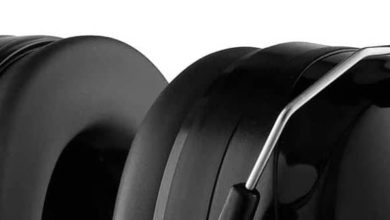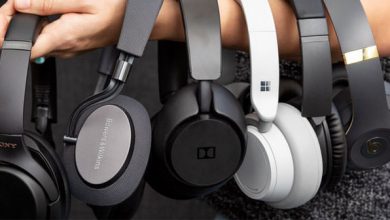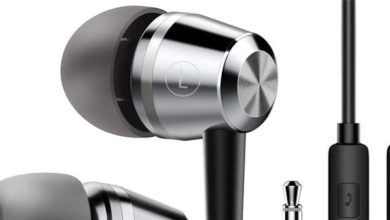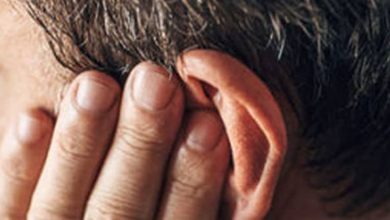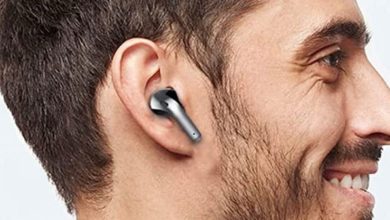
Types Of Headphones In Detail: Which To Choose?
What are the different types of headphones available? Which headset to buy? Do you need lightweight and portable headphones? Do you listen to music, mainly outdoors, or sitting comfortably on the sofa? Are you looking for headphones suitable for your smartphone?
Here you will find an overview of the different types of headphones and their characteristics.
Types Of Headphones
It is possible to distinguish the existing types of headphones based on the shape, acoustic load, and transducer’s construction technology. Concerning the form, ear, circumaural, and sculptural headphones are distinguished. The acoustic load is related to the type of headphones open, half-open, or closed.
Finally, the speaker transducer can be based on dynamic or electrostatic technology. The different types of dynamic or electrostatic headphones require a separate study.
Here I will tell you that most headphones on the market are dynamic.
Let’s look at the shape characteristics in more detail.
Earphone Type Headphones
The headphones are the smallest in existence, very light, and with maximum portability. They are used a lot with smartphones and mp3 players; they are almost always included in the package. They can be a good solution for anyone who needs practicality, moves a lot, and prefers portability at the expense of audio quality.
There are two types of headphones:
Traditional Earbuds
They are the standard earphones that rest on the entrance to the ear canal. They have spread widely with the walkman’s advent thanks to their portability: light, small, very practical, inexpensive.
Some limitations of the headphones:
- Poor isolation from the environment.
- Not very ergonomic because they cannot be adapted to the different individual ear sizes, they move and fall easily.
- The poor performance of low frequencies.
In-Ear Headphones
In-Ear headphones ” are inserted into the ear canal, in a similar way to earplugs. They are more stable, do not move, and do not fall.
They allow high isolation from external noises, better bass reproduction, greater sound performance, which is conveyed much closer to the eardrum. They are equipped with silicone covers and in some models of memory foam adapters, which modify their dimensions to adapt them to different ear canal sizes.
They are spreading a lot, but they have some disadvantages:
- They can damage the auditory system if used for more than 4 hours at a volume greater than 70%.
- They can favor the formation of ear wax and, in any case, push it further into the ear canal.
- Shallow depth of sound.
Those who demand hi-fi performance will generally tend to exclude all types of headphones.
Supernatural Headphones (On-Ear Headphones)
The supra-aural headphones rest on the auricle without completely wrapping it. They are suitable for those who need portable headphones without sacrificing sound quality, superior to earphones.
Although they are bulkier than the earphones, they are relatively light, and there are folding models on the market that facilitate their portability.
They are more comfortable than earphones because they use the headband that wraps the head and avoids the hassle of having a foreign body in the ear.
Negative aspects of the supra-aural headphones:
- The padding of the speakers gets dirty and ages if used a lot outdoors.
- If used for many hours, they cause discomfort and sweating in the ear.
- Poor insulation from the outside.
Circumaural headphones (Over-The-Ear)
The circumaural headphones cover and surround the auricle, completely isolating the ear. They are much larger and bulkier than all previous models and are not considered portable headphones.
The quality of the reproduced sound is remarkable. They are the headphones preferred by those who require Hi-Fi sound and top performance. These headphones have thicker padding, which makes sure that the speakers are slightly detached from the ear. They have excellent spatial performance: the sound is deeper and more realistic.
The peculiarities of these headphones are the high cost, the non-portability, the need for amplification. In essence, they were born to be supported by an amplifier, with which they give the maximum.
This does not exclude the existence of models that can be used with the smartphone, maintaining a good performance. Supraural and circumaural headphones can be of the closed or open type.
Closed headphones
They have the speakers’ external part (i.e., the part that does not look at the ear canal) closed. In this way, the speakers are more isolated from the outside.
This translates into greater isolation from the environment and less dispersion of sound. A negative aspect may be poor ventilation, which can cause ear discomfort after many hours of listening.
Open Headphones
Unlike the previous ones, they have no closure on the external side. This can also be seen from the fact that the speaker’s internal circuit is visible from the outside.
The main consequence of this solution is poor insulation. It will be easy to hear the noises of the environment. It should be used in situations dedicated to listening: listening to rooms, recording studios, or at least your room dedicated to high fidelity.
They are considered by many to be the best headphones because they reproduce a very natural sound with good depth and spatiality. Being open allows air to circulate, avoiding the emphasis of the bass.
Semi-open headphones
The semi-open headphones try to combine both the previous solutions’ peculiarities to obtain a certain degree of isolation without loss of depth and realism.
Wireless headphones
The spread of liquid music, or anytime-anywhere listening, has accompanied the success of wireless headphones. There are both auricular and supraural, and circumaural wireless headphones.
Those who practice sports or any activity that requires freedom of movement, especially the arms, will find wireless earphones very comfortable. If you also need to call, there are ear models equipped with a microphone.
Being supra-aural or circumaural headphones, being larger, they are more suitable for domestic environments or, in particular, work situations. For example, they are used with a TV or with video game consoles. Some circumaural headphones with microphones are used in recording and television studios.
In every wireless headphone, signal transmission technology can be infrared, Bluetooth, or radiofrequency. The choice once again depends on the context of use, and the topic deserves a separate discussion.
All wireless headphones have a limit of autonomy and range. Another negative element is the need to compress the sound to transmit it wirelessly. This inevitably affects the final quality of the sound.
To obtain good performances in terms of sound quality and autonomy, it is necessary to focus on the more expensive models.
New Types Of Headphones
Some manufacturers have invented new types of headphones suitable for particular groups of users, mainly to improve ergonomics and, in some cases, even the quality of the audio. Here are some:
Clip-On Earbuds
They are practically earphones with a hook that rests on one end of the pavilion and significantly improves the seal. They were specially designed for sportsmen and are also resistant to water and sweat. They should be tried before buying them because they fit perfectly, while for others, they are uncomfortable.
Behind-the-neck headphones
Anyone who has used headphones at least once will have noticed that the cables, although very thin, are often annoying and tend to hinder the arms’ movements. To eliminate this drawback, behind-the-neck headphones have been invented in which the cables always fall behind the neck.
They can be both intraarticular and supraural; in supraural, the bow rests behind the neck, which can be a nuisance if you want to lie down or rest on your head. There are also wireless models with Bluetooth technology. These will be perfect for gym activities: you can leave your smartphone in your bag and move freely in the environment with earphones on your ear.
Noise-Canceling headphones
These headphones significantly reduce external noise, thus promoting greater isolation from the environment and a better listening experience. They are of the supraural or circumaural type and are divided into active and passive.
The active anti-noise headphones are equipped with a microphone that detects the sounds coming from the speakers’ external side. They produce sound waves through an electric circuit opposite to those detected, effectively canceling the external sound.
Passive noise-canceling headphones do not have a circuit and microphone in the speakers. They reduce noise only through better insulation from the outside. They have thicker padding and are closed on the outside. The circumaural ones will be more effective, managing to isolate the ear more.
I wanted to make an overview of the various types of headphones available on the market. Based on the use you will make of it, it is appropriate to deepen the knowledge of a specific type of headphones.
Product prices and availability are subject to change. Any price and availablility information displayed on Amazon at the time of purchase will apply to the purchase of any products.

